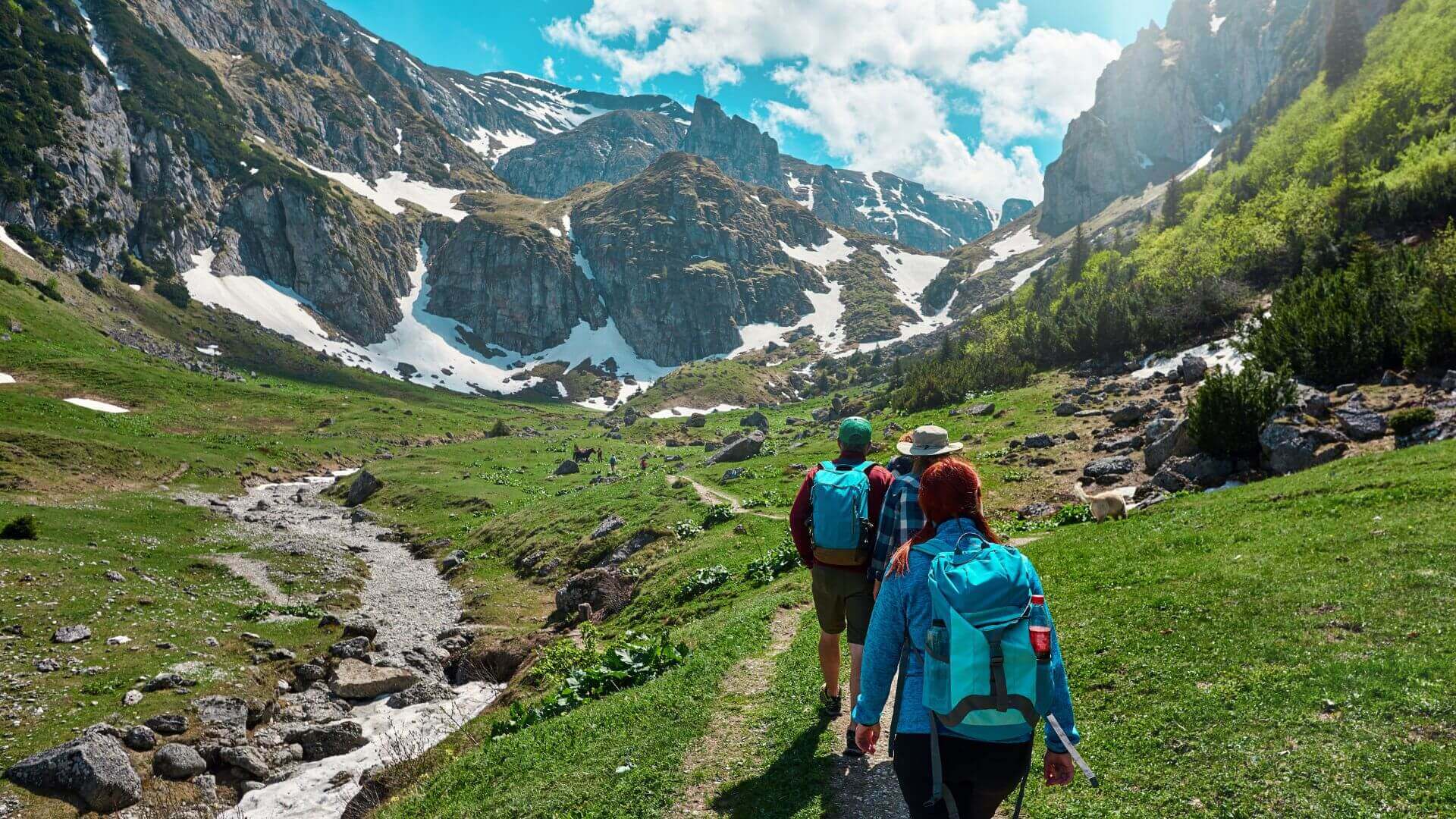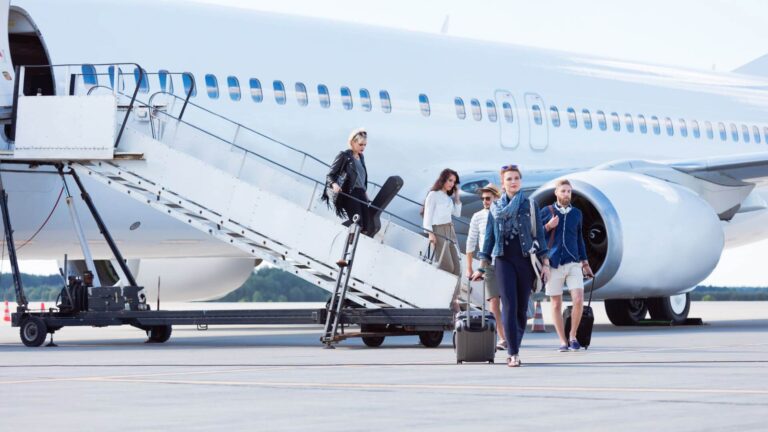If you’re the type of person who gets restless lounging on a beach and craves heart-pounding experiences, adventure travel is calling your name. Forget predictable vacations and generic sightseeing. The world is packed with extreme activities that’ll push your limits, flood your veins with adrenaline, and give you stories worth telling for years.
Whether you’re exploring adventure travel destinations for solo travelers or searching for the perfect rush with a partner, this guide covers seven extreme activities that separate casual tourists from genuine thrill-seekers. Let’s dive into the wild side of travel.

1. White Water Rafting Through Untamed Rapids
Nothing quite matches the sensation of paddling through churning white water while navigating Class IV or V rapids. This adventure travel experience combines teamwork, physical strength, and split-second decision-making as you battle against nature’s raw power.
South America offers some of the planet’s most intense rafting opportunities. The Futaleufú River in Patagonia delivers world-class rapids surrounded by stunning mountain scenery. Meanwhile, adventure travel in Costa Rica takes you down the Pacuare River, where you’ll navigate through rainforest canyons and past cascading waterfalls.
For those considering adventure travel tips for beginners, start with lower-class rapids before graduating to more challenging routes. Most adventure travel companies for couples offer guided expeditions with experienced instructors who’ll teach proper paddling techniques and safety protocols.
Essential adventure travel gear essentials include quick-dry clothing, water shoes with good grip, and a properly fitted helmet and life jacket (usually provided by tour operators). The physical demands are real, but the payoff is worth every muscle ache.
2. Skydiving from Breathtaking Heights
Jumping from an aircraft at 13,000 feet isn’t for everyone, but it’s the ultimate test of courage for thrill-seekers. The freefall lasts about 60 seconds at speeds reaching 120 mph before your parachute deploys and you float peacefully toward earth.
Adventure travel in New Zealand features some of the world’s most scenic skydiving locations, particularly around Queenstown where you’ll descend with views of snow-capped mountains and crystal-clear lakes. If you’re exploring adventure travel in Switzerland, the Swiss Alps provide an equally stunning backdrop for your aerial adventure.
Those researching adventure travel destinations for solo travelers will find skydiving companies worldwide that welcome individual bookers. Tandem jumps with certified instructors make this accessible even for first-timers, though you’ll need to meet basic health requirements.
Before booking, check your adventure travel insurance providers to ensure coverage for extreme sports. Not all policies include high-risk activities, and the last thing you want is unexpected medical bills if something goes wrong.
3. Ice Climbing Frozen Waterfalls
Scaling a frozen waterfall with nothing but ice axes and crampons tests your physical endurance and mental fortitude. This winter-specific adventure travel activity requires strength, technique, and unwavering focus as you ascend slippery vertical ice formations.
Adventure travel in the Canadian Rockies offers exceptional ice climbing opportunities, particularly around Banff and Jasper National Parks. The Rockies feature everything from beginner-friendly frozen cascades to challenging multi-pitch climbs that demand advanced skills.
For those planning adventure travel in Iceland, the country’s numerous glaciers and frozen waterfalls provide year-round climbing possibilities. Similarly, adventure travel in Nepal includes ice climbing experiences in the Himalayas, though these typically require significant mountaineering experience.
This activity demands specialized adventure travel gear essentials including insulated clothing layers, technical ice tools, climbing harnesses, and helmet protection. Many guided tours provide equipment, but serious climbers invest in personal gear that fits properly and meets safety standards.
The main challenge here isn’t just physical. Cold weather conditions, avalanche risks, and changing ice stability require constant vigilance and respect for nature’s unpredictability.
4. Cage Diving with Great White Sharks
Coming face-to-face with one of the ocean’s apex predators from inside a protective cage creates an unforgettable adventure travel experience. Watching a 15-foot great white shark circle just inches from your face triggers primal emotions unlike any other activity.
Adventure travel in Australia, specifically around Port Lincoln, offers premier shark cage diving opportunities. The waters here teem with great whites year-round, providing consistent encounters that satisfy even the most demanding thrill-seekers.
Adventure travel in Africa also delivers world-class shark diving, particularly off the coast of South Africa near Gansbaai. These waters attract massive sharks drawn by seal colonies, creating ideal conditions for close-up encounters.
Most operations don’t require diving certification since you’ll stay near the surface breathing through a regulator. However, you should feel comfortable in water and be able to manage mild claustrophobia inside the cage. Adventure travel photography tips suggest bringing an underwater camera with good low-light performance to capture these incredible moments.
The drawback? Ethical concerns about chumming (using bait to attract sharks) and its impact on shark behavior patterns. Research operators carefully and choose those committed to responsible wildlife interactions.
5. Volcano Boarding Down Active Slopes
Imagine strapping a piece of reinforced plywood to your body and sliding down the ash-covered slopes of an active volcano at speeds reaching 50 mph. Volcano boarding combines elements of snowboarding and sledding but replaces snow with volcanic debris.
Adventure travel in Central America, particularly at Cerro Negro in Nicaragua, pioneered this extreme sport. The volcano’s consistent black ash slope creates perfect conditions for controlled descents, though you’ll definitely eat some volcanic dust along the way.
This relatively affordable adventure travel package option costs significantly less than many extreme activities while delivering comparable thrills. The hike up takes about an hour, giving you time to appreciate the surreal landscape before your rapid descent.
Protective adventure travel gear essentials include goggles, bandanas to cover your face, long sleeves and pants (despite the heat), and gloves. The volcanic ash is abrasive and gets everywhere, so prepare for a thorough cleanup afterward.
The main risk involves speed control and potential falls on the sharp volcanic rock. Minor cuts and bruises are common, making this adventure travel experience one where those bumps and scrapes become badges of honor.
6. Bungee Jumping from Extreme Heights
Few activities match the pure terror and exhilaration of standing on a platform hundreds of feet above the ground, knowing you’re about to leap into open air with only an elastic cord preventing your demise.
Adventure travel in New Zealand claims the birthplace of commercial bungee jumping, and locations like the Nevis Bungy (440 feet) and Kawarau Bridge continue attracting daredevils worldwide. The combination of stunning scenery and professional operations makes these jumps relatively safe despite the extreme nature.
For those exploring adventure travel in Europe, various locations across Switzerland, Austria, and Norway offer bridge and dam jumps with spectacular alpine backdrops. Adventure travel in Africa includes the famous Victoria Falls bridge jump, where you’ll plunge toward the Zambezi River with mist from the falls surrounding you.
The psychological challenge often exceeds the physical one. Your brain screams warnings about jumping off ledges while you must override every survival instinct and step into emptiness. That internal battle makes the victory even sweeter.
Reputable operators maintain strict safety standards, regularly inspect equipment, and employ trained staff. However, adventure travel insurance providers often exclude bungee jumping, so verify your coverage beforehand.
7. Sandboarding Down Desert Dunes
Trading snowy mountains for desert landscapes, sandboarding delivers similar thrills to snowboarding but with unique challenges created by sand’s different friction properties. The sport works best on tall dunes with consistent slopes, creating opportunities for both beginners and experienced boarders.
Adventure travel in Peru includes sandboarding near Huacachina, an oasis town surrounded by towering sand dunes. The combination of desert adventure and nearby cultural attractions in Ica makes this an accessible option for varied itineraries.
Adventure travel in the Sahara Desert offers sandboarding experiences in Morocco, where endless dunes provide natural terrain parks. Meanwhile, adventure travel in Africa extends to Namibia’s massive dunes, some reaching over 1,000 feet in height.
Unlike snow, sand doesn’t require edge control in the same way, but it demands different balance and momentum techniques. Falls hurt less than on snow or rock, making sandboarding more forgiving for beginners learning the ropes.
The biggest challenges include scorching temperatures during midday hours and sand infiltrating every piece of equipment and clothing. Plan sessions during early morning or late afternoon, and bring plenty of water as part of your adventure travel packing list for women and men alike.
Preparing for Your Extreme Adventure
Successfully tackling these extreme activities requires more than just courage. Physical fitness matters tremendously, as most activities demand strength, endurance, and cardiovascular capacity beyond normal daily requirements.
Research adventure travel blogs to follow for firsthand accounts and honest assessments of different experiences. Reading about others’ challenges helps set realistic expectations and prepares you mentally for what’s ahead.
Consider booking through reputable adventure travel companies for couples or solo operators who prioritize safety alongside thrills. Professional guides bring invaluable local knowledge, proper equipment, and emergency response training that can mean the difference between an epic story and a tragic outcome.
Budget plays a role too. While some affordable adventure travel packages exist, cutting corners on safety to save money creates unnecessary risks. Quality operators invest in maintenance, training, and proper insurance, which costs more but provides essential protection.
The Challenges You’ll Face
Extreme adventure travel isn’t all Instagram-worthy moments and personal triumphs. Physical injuries happen, even with proper precautions. Sprains, fractures, cuts, and bruises represent occupational hazards of pushing your limits in demanding environments.
Environmental conditions create additional challenges. Weather can change rapidly in mountains, deserts, and oceans, transforming manageable situations into dangerous ones. Altitude sickness affects many travelers exploring adventure travel in the Himalayas or adventure travel in the Andes Mountains, requiring acclimatization time that many rushed itineraries don’t accommodate.
Mental health considerations matter too. The stress of extreme activities can trigger anxiety, panic attacks, or other psychological responses that aren’t always predictable. Knowing your limits and being willing to back out, even after paying for an experience, shows wisdom rather than weakness.
Finally, the financial reality includes the cost of proper adventure travel insurance providers who actually cover extreme sports. Standard travel insurance excludes most high-risk activities, requiring specialized policies that cost significantly more but provide crucial coverage if accidents occur.
Making It Happen
For adventure travel for digital nomads, timing activities around work commitments requires careful planning. Most extreme activities can’t be squeezed into lunch breaks, so budget full days for major undertakings.
Your adventure travel packing list should prioritize versatile, durable gear that handles multiple activities. Quality hiking boots, moisture-wicking layers, and weather-appropriate outerwear form the foundation. Add activity-specific items as needed, but avoid overpacking since hauling excessive luggage contradicts the nimble spirit of adventure travel.
Connect with adventure travel communities online and in person. Fellow thrill-seekers offer recommendations, tips, and sometimes travel partnerships that enhance experiences while improving safety through the buddy system.
Most importantly, respect your personal limits while staying open to growth. The point isn’t proving anything to anyone else but rather discovering your own capabilities and experiencing the incredible rush that comes from conquering genuine challenges.
What should I look for when choosing adventure travel companies?
Prioritize operators with strong safety records, proper licensing and insurance, experienced guides, and quality equipment. Read recent reviews carefully, checking for patterns of complaints about safety shortcuts or poorly maintained gear. Ask about guide-to-participant ratios, emergency protocols, and medical support availability. Legitimate companies willingly answer these questions and provide detailed safety information.
How much should I budget for extreme adventure travel activities?
Costs vary dramatically by location and activity. Skydiving typically runs $200-400, while white water rafting ranges from $50-200 per day depending on the river and trip duration. Ice climbing courses start around $150-300 per day. Budget an additional 20-30% for proper insurance, quality gear purchases or rentals, and transportation to activity locations. Affordable adventure travel packages exist but carefully evaluate what’s included versus cutting corners on safety.
Do I need special fitness levels for extreme adventure travel?
Most extreme activities require above-average fitness, though specific demands vary. Ice climbing and white water rafting need upper body strength and endurance. Volcano boarding requires hiking fitness for the climb up. Honestly assess your current fitness and start training 2-3 months before major activities. Focus on cardiovascular endurance, core strength, and activity-specific movements. Many operators have minimum fitness requirements, so ask about expectations during booking.
What’s the most important adventure travel gear essential?
While specific activities require specialized equipment, quality footwear ranks as the most universally critical gear item. Proper hiking boots or activity-specific shoes prevent injuries, improve performance, and increase comfort across multiple adventure travel situations. Invest in well-fitted, broken-in footwear appropriate for your planned activities. Second priority goes to layered clothing systems that adapt to changing weather conditions, particularly moisture-wicking base layers and weather-resistant outer shells.







